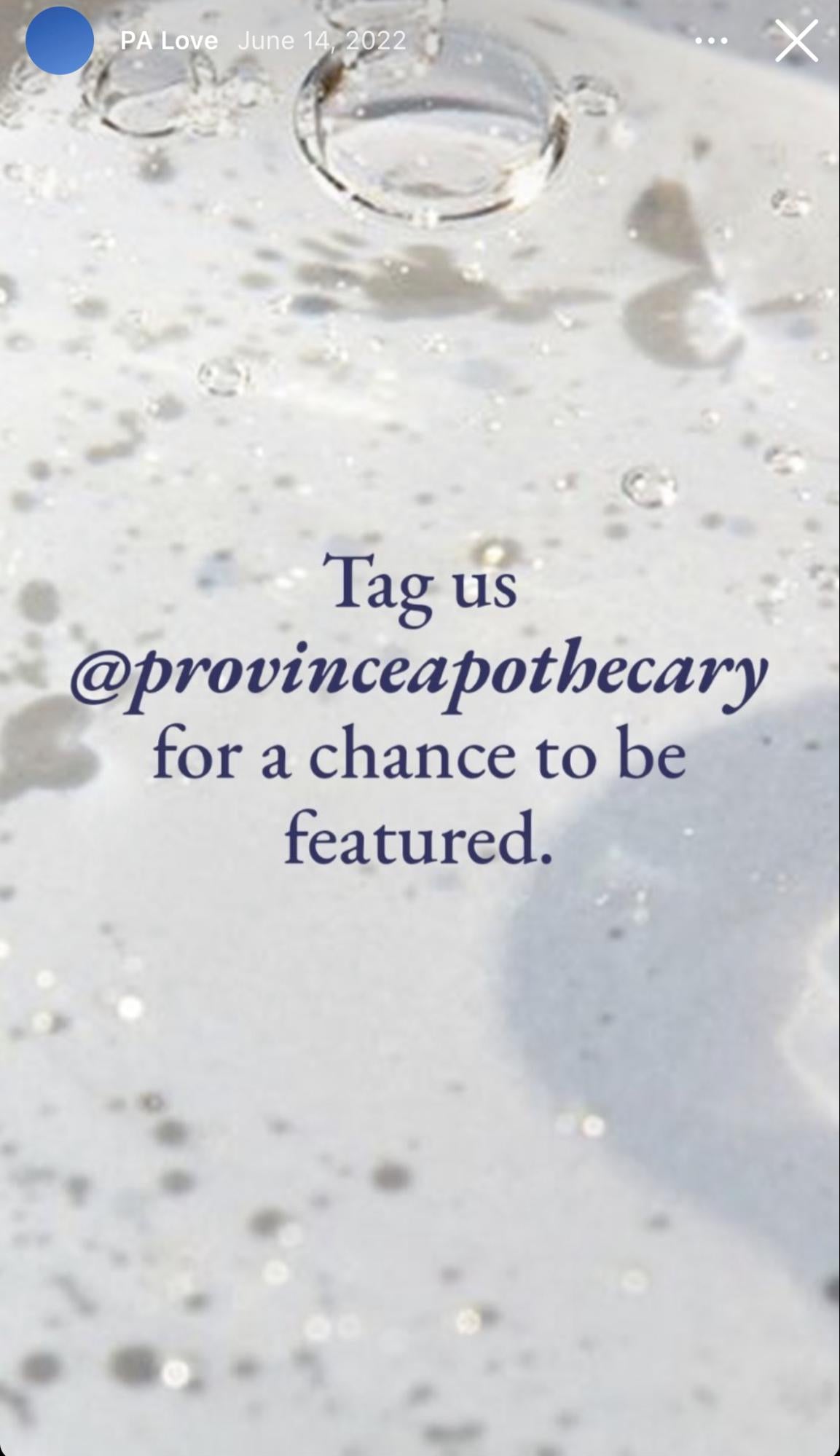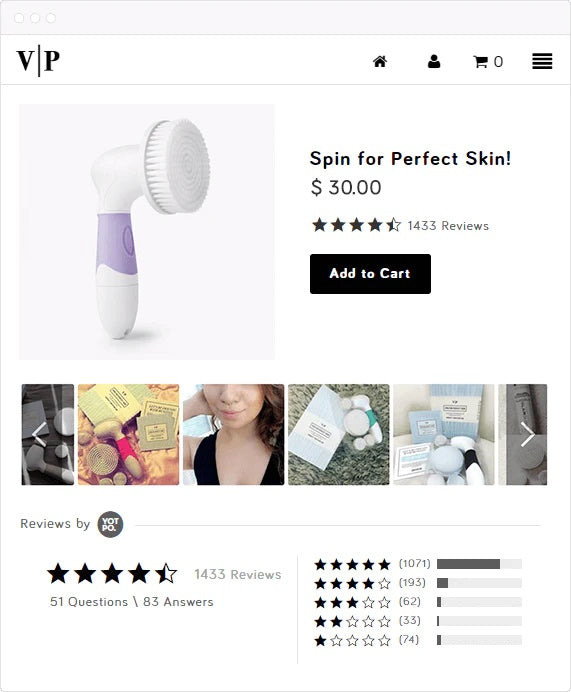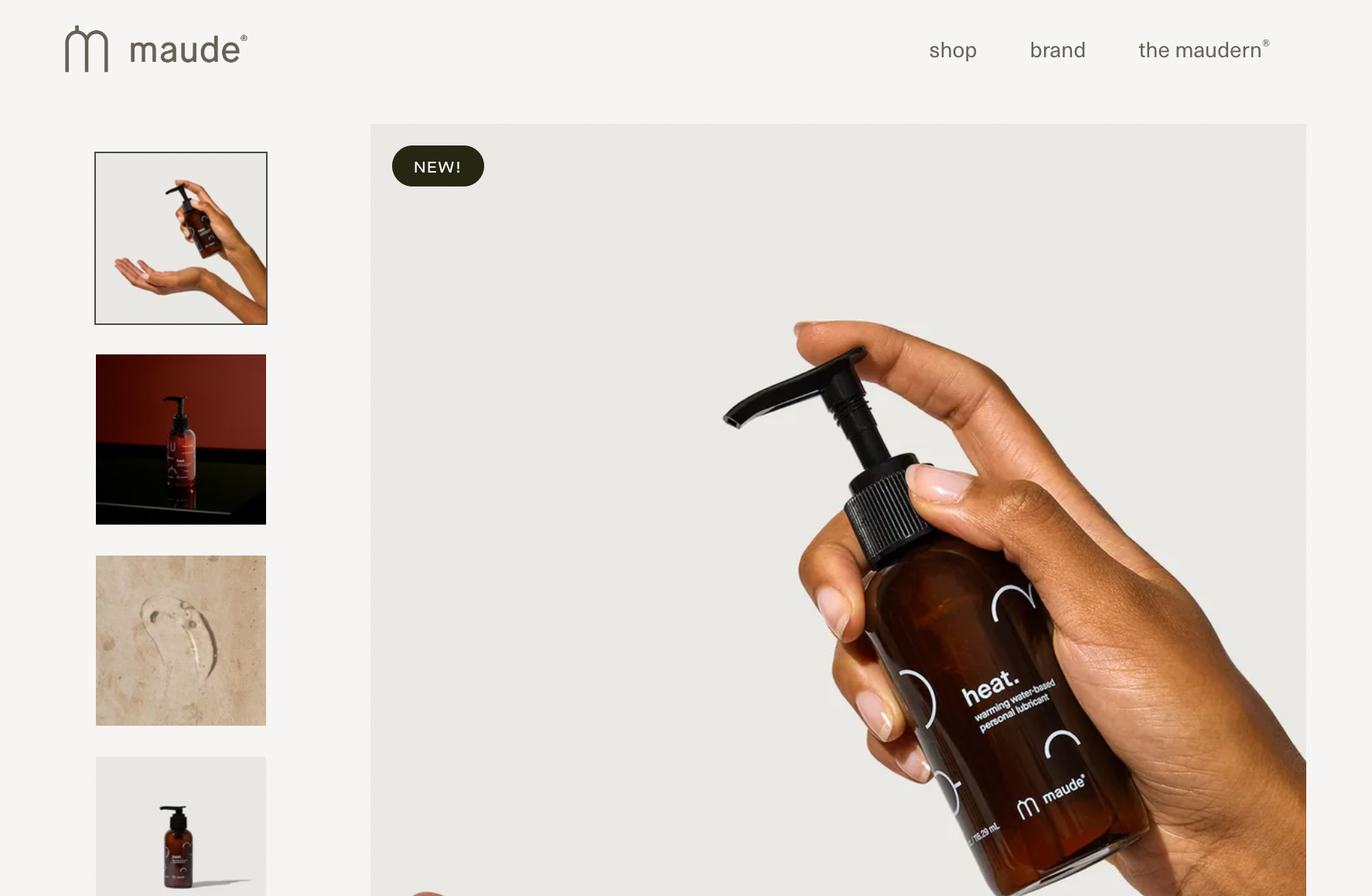User-generated content (UGC) can significantly impact your brand’s ability to increase revenue, retain customers, and acquire new ones.
But what is it? User-generated content is original content created by fans and customers, instead of the brand itself. Loyal customers, fans, and advocates post photos, videos, testimonials, and even podcasts, usually to social media, about your brand or its products. The advantage of UGC is it’s trustworthy and shows authenticity with shoppers, all while building up your brand awareness.
UGC is a great way to establish and build loyalty with your customers, as well help differentiate your brand in a crowded, noisy market.
As much as influencers are part of a brand’s marketing strategy, so, too, is UGC. That’s because buyers are nearly 10 times more likely to find UGC more impactful than influencer-led campaigns. Around 79% of those surveyed by Stackla say UGC influences their decision to buy.
Here are six examples of how to leverage UGC for your business goals, with tips to get the most out of it.
Pura Vida: Building a community with hashtag-led campaigns to drive visibility
Hashtag-led campaigns are a valuable way for customers to find and follow their favorite brands, and stay part of a trend or conversation. Hashtags are everywhere on social media: Twitter, Instagram, and, of course, TikTok.
Hashtag-led campaigns are a fun and inclusive path for your buyers that:
Increase brand awareness
Drive engagement
Promote products in an authentic, buyer-focused way
Brands can engage fans by creating their own hashtag and incentivize customers to use it. Consider how your customers feel about your brand and encourage them to create content that shares it.

The jewelry brand Pura Vida combined UGC requests in the form of a hashtag with a discount code in their post-purchase emails. The brand used the hashtag #puravidabracelets to help keep buyers connected to the brand after they bought products. Customers who used the hashtag could be featured on the brand’s social media account. Other shoppers can search the hashtag and find a community of fellow brand fans. The hashtag was shared with a discount code for a future sale, which is great for customer retention.
Cupshe: Allow customer feedback on product pages with photo reviews
Today, many ecommerce customers expect to see feedback and reviews on products before they buy. Beyond words, product photos by customers provide real value for your buyers. Not only do they establish a trust and credibility, UGC photos can:
Make for a stickier experience. After seeing a few product pages with customer photo reviews, potential buyers may want to literally stick around to peruse the website for more.
Let buyers see the product IRL. Models are one thing but seeing a piece of clothing on someone in their day-to-day life helps a buyer visualize what it may look like on them.
Establish strong social proof. Seeing other people own what you want to buy creates a stronger need to purchase it.
Swimsuit brand Cupshe successfully leverages customer feedback on product pages with photos reviews. While its bestselling black cut-out one-piece swimsuit features all of the information buyers need on the product itself at the top of the page, customer reviews and images show shoppers how the suit fits on different body types.
Here, UGC builds trust with potential buyers, it also encourages community by letting customers share their honest opinions and photos of their purchases with one another.

Province Apothecary: Use social media for sharing consumer-focused campaigns
One of the ways brands can incorporate UGC into their strategy is by sharing how consumers use their products through targeted or ongoing campaigns. It’s a cost-effective way to produce content for your social media without the help of an agency or multi-person team. By sourcing posts from hashtags, tagging, or a concentrated campaign strategy for your audience, you can share real-time, authentic, and organic social posts to a wider network.


Canadian beauty brand Province Apothecary consistently incorporates customers into its social media posts. The brand shares Instagram posts dedicated to what it calls “PA on You,” reposting videos and photos of customers using their products.
Two Blind Brothers: Campaigns that partner with charities and nonprofits
Using UGC for pure revenue and customer acquisition is the antithesis of what this approach is for. Customers want to buy from brands that have similar values, prioritize authenticity, are transparent, and that engage with the world in meaningful ways.
Share the charities, causes, or nonprofits that matter most to you through specific or ongoing UGC campaigns that partner with specific organizations or raise funds for donation.
Apparel brand Two Blind Brothers have built a following through sharing buyer’s reactions to their Shop Blind challenge, where customers purchase items without knowing what they are. The proceeds of the program go to a variety of charities and research organizations dedicated to finding a cure for blindness.
Customers are encouraged to share videos of unboxing their surprise orders for a chance to be featured on the brand’s YouTube or Instagram accounts.
The brand’s co-founders have Stargardt disease, which causes loss of sight through macular degeneration in the eye. These UGC posts, re-shared or co-shared, promote both the brand’s products and cause it supports.
Vanity Planet: Involve consumers in product concept and ideas
Product development is a way to engage with customers and incorporate UGC. You can get precise and valuable input from customers by doing focus groups, but it’s hard to scale over time and across customer segments, product categories, and different markets.
On social media, you get constant, large-scale feedback. Customer reviews are a great source for comments to help you determine what your audience likes and doesn't like about your products and brand. Opinions shared by buyers though videos, photos, and reviews can ensure you’re creating the products your audience needs.

Vanity Planet turned product pages into a dynamic community. It made it much more powerful for first-time visitors to feel confident in the brand. It let customers’ voices champion and evangelize its products, because they also had a hand in developing them. This feedback loop of reviews and real-time insights from buyers has helped Vanity Planet develop products that people actually want to purchase.
Maude: Honest testimonials from consumers
Customer reviews and testimonials are important UGC examples. Potential buyers often rely on the advice from friends and family, and strangers, too. According to Statista, 32% of customers seek out the advice of buyer reviews and testimonials before making a purchase.
This content marries loyalty and retention together because your buyer is trying the product, reviewing it, and advocating for continued use. A customer that’s specific about what the product does for them can help resonate with your target buying audience.


Sexual wellness brand Maude includes customer reviews on its product pages and uses them on social posts to help promote products.
It’s important for this brand to set itself apart because it falls into the often crowded industries of beauty, wellness, and sex. Customers need to trust intimate products and these testimonials help them understand the nuances before testing it out themselves.
The buyer’s journey doesn’t end when the customer checks out
It’s important to look at retention as another stage in the customer journey. Or, even better, another funnel where you can engage your community of buyers with UGC to help them become brand ambassadors, which helps increase sales. Sending the right message at the right time to your customers can generate additional sales.
Incorporating UGC into your retention tools, such as coupons and upselling, makes it easier to connect with hard-earned customers and to bring them back to shop on your site. With the right UGC strategy, you can improve customer engagement and boost sales among your current community of customers—and increase new customer acquisitions.
Read more
- Shipping and Supply Chain Best Practices from UPS, Deloitte, and 6 River Systems
- Multi-Channel Customer Acquisition: 7 Tips from $3.7M+ in Ad Spend
- 10 Best Omni-Channel Retailers and What You Can Learn From Them
- Wholesale Ecommerce: What is It and How to Start?
- How to Use a What-if Analysis to Measure the Effects of Your Decisions
- The Secret Holiday Ecommerce Strategy to More Campaigns & Sales in 2021
- Ecommerce Agency Automation: Saving Time, Selling More & Launching Faster
- Decoy Pricing: Secret Strategies Your Competitors Use to Get Customers to Spend More
- Why Are You Still Paying Over $1 Million for an Ecommerce Site? The Answer May Shock You
- What is a PIM for Ecommerce? Definition and Best Software Picks
UGC examples FAQ
What are some examples of brands that use UGC?
Some brands that use user-generated content include Kylie Cosmetics (reposts of customer tutorial videos on Instagram Stories), Two Blind Brothers (campaign- and nonprofit-related content on social media), maude (customer testimonials), and Province Apothecary (sharing customers’ content for “PA on You” campaign).
What are some types of UGC feedback?
UGC feedback types include reviews and testimonials. These can be written, photos, video, or audio.
What counts as UGC?
UGC includes photos, videos, testimonials, and podcasts made by shoppers about the brand and their products.
What are some UGC niches?
Specific types of products, groups, or buyers that may or may not have a large audience. This can include beauty product buyers, specific “core” trends on TikTok, and more.
What are the three types of ecommerce?
The three types of ecommerce are: business-to-business (B2B), business-to-consumer (B2C), and consumer-to-consumer (C2C.)
Is TikTok a UGC platform?
TikTok is a platform that can host user-generated content posted by consumers.


